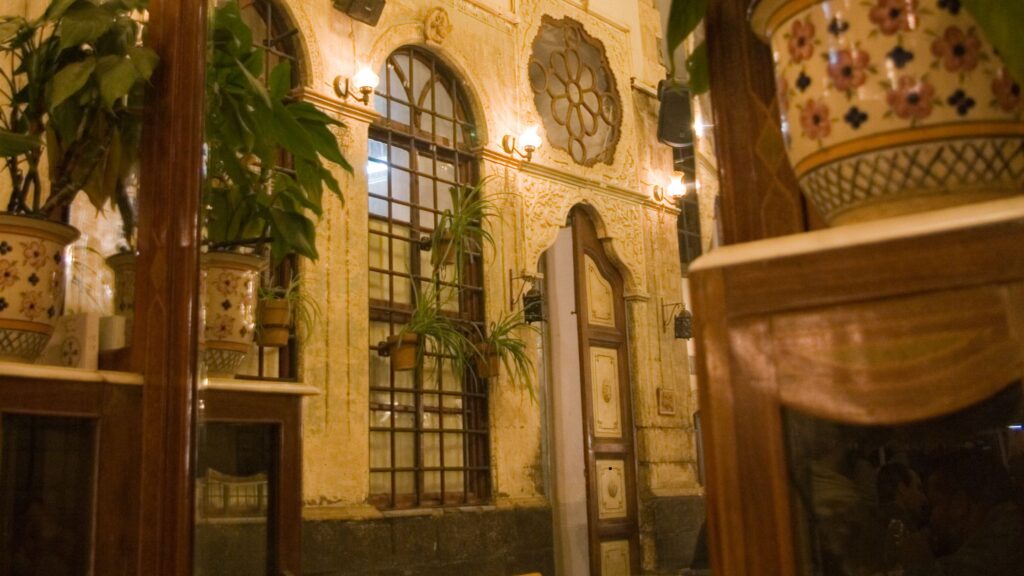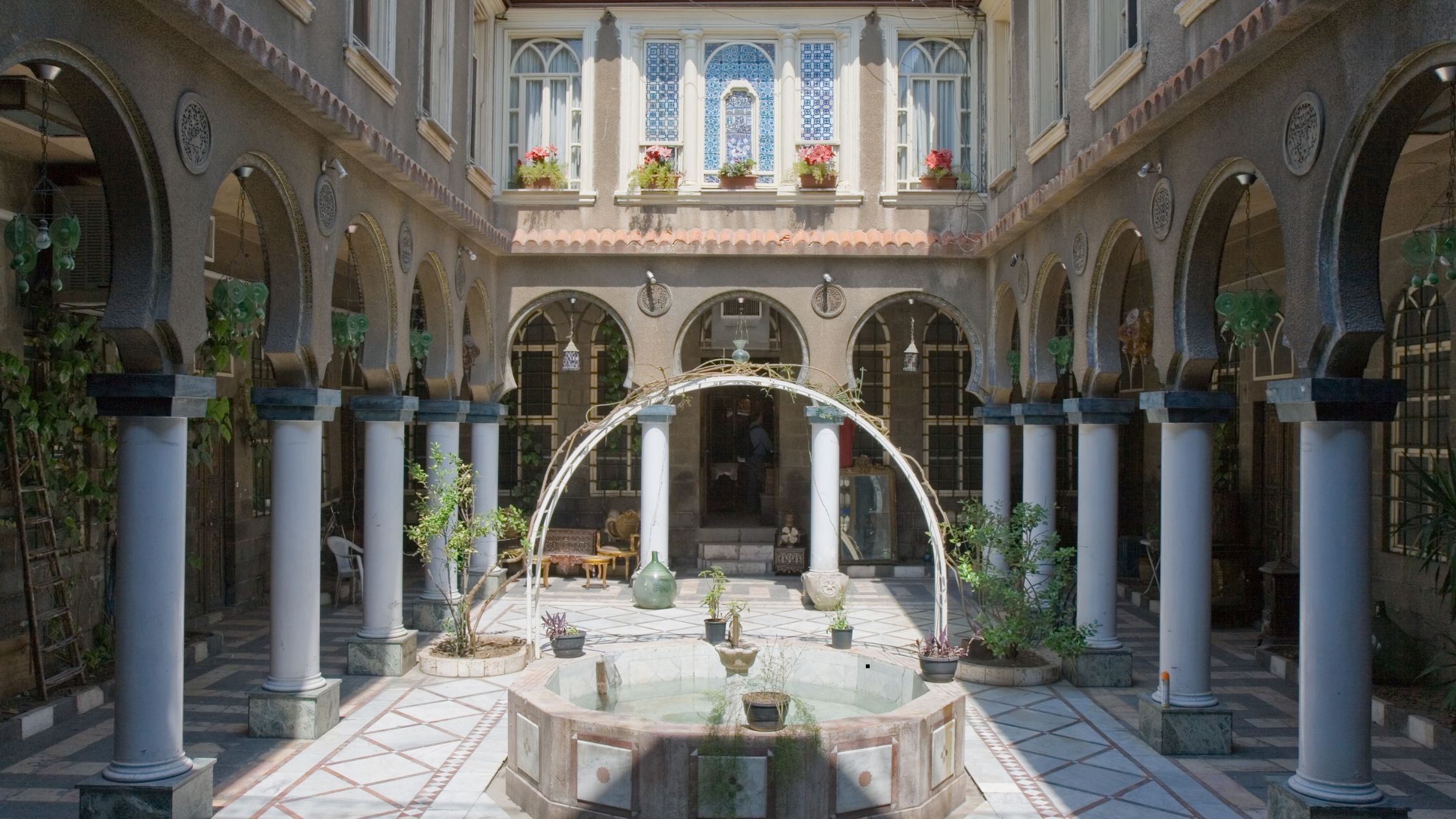In the lively, culturally rich Damascus of the 1920s, a fascinating wellness trend took hold among the city’s elite during the Arab Renaissance, or Nahda. Called the hammam diet, this short-lived craze blended old-world Ottoman bathing rituals, periods of disciplined fasting, and fragrant, floral-infused remedies into a holistic approach to health and beauty.
The hammam diet was a reflection of its time—a fusion of modern ideas and deep-rooted traditions. Damascus’s upper class embraced it not just for its luxurious rituals but as a way to reimagine heritage in a rapidly changing world. By the 1930s, the trend had faded, but it remains a glimpse into a transformative chapter of Syrian history.
Historical Context: The Nahda And the Rise of Elite Wellness Culture
The 1920s marked a period of profound cultural and intellectual awakening across the Arab world. In Damascus, the heart of the Nahda, urban elites – comprising wealthy merchants, intellectuals, and Ottoman-era aristocrats — sought to redefine their identity amid shifting political landscapes.
Syria had recently transitioned from Ottoman rule to French Mandate governance, and the city became a crucible for innovation in art, literature, and lifestyle.
Wellness practices became a symbol of status and modernity. Drawing from both Islamic medical traditions and European influences, Damascene high society experimented with regimens that promised vitality and refinement.
The hammam diet emerged as one such trend, blending the communal ritual of the hammam (public bathhouse) with structured fasting and herbal tonics. Its proponents framed it as a “detoxification” system, aligning with global interest in holistic health – a concept gaining traction in Europe and America at the time.
Pillars of the Hammam Diet: Fasting, Steam, and Roses
1. Intermittent Fasting: Discipline and Purification
Central to the hammam diet was a strict fasting protocol. Participants abstained from food from sunrise to sunset, echoing Ramadan but stripped of its religious context. Instead, the focus was on “internal cleansing.” Elites believed fasting expelled “impurities” linked to urban decadence—a nod to critiques of overindulgence in rich foods and coffee. Unlike religious fasting, this regimen permitted rose petal-infused water and herbal teas to stave off hunger, emphasizing moderation over deprivation.
2. Steam Cleansing: The Hammam as a Sanctum
The hammam, a cornerstone of Ottoman and Arab culture, was reimagined as a wellness sanctuary. Diet adherents visited daily for steam sessions lasting up to two hours, believed to open pores, release toxins, and stimulate circulation. Attendants scrubbed bathers with kessa gloves, followed by massages using oils infused with rosemary and laurel. The ritual wasn’t merely physical; it was a social event where elites exchanged ideas, reinforcing their shared identity.
3. Rose Petal Tonics: Beauty in a Glass
No element of the hammam diet was more iconic than its rose petal tonics. Damascus had long been famed for its Rosa damascena fields, and the diet capitalized on this heritage. Petals were distilled into syrups or steeped in water with honey and lemon, consumed to “cool” the body and enhance complexion. Rosewater also served as a facial mist, touted to reduce redness and hydrate skin—a precursor to modern aromatherapy.

The Role of Aesthetics and Sensory Luxury
Beyond its health claims, the hammam diet thrived on sensory indulgence. Steam rooms were perfumed with sandalwood, sessions concluded with mint tea served in silverware, and rose tonics were presented in hand-painted glassware. This attention to aesthetics mirrored Damascene craftsmanship, from brocaded towels to intricate bath house mosaics. The diet wasn’t just a cleanse; it was an immersive experience that elevated daily rituals into art.
Why Did the Hammam Diet Fade?
By the early 1930s, the hammam diet had largely vanished. Its decline stemmed from multiple factors:
- Economic Shifts: The 1929 global crash reduced disposable income among elites, making daily hammam visits unsustainable.
- Political Turmoil: Growing anti-French sentiment and nationalist movements shifted priorities away from leisurely pursuits.
- Scientific Skepticism: Younger generations, educated in European universities, dismissed the diet as “old-fashioned,” favoring clinical medicine over traditional tonics.
Yet, its demise also underscored the transient nature of wellness trends. As one 1932 editorial in Alef lamented, “Damascus seeks the new, even as it mourns the old.”
Legacy: Echoes in Modern Wellness
Though brief, the hammam diet left subtle imprints. Intermittent fasting resurged globally in the 21st century, while steam therapies remain staples in spas from Istanbul to Beverly Hills. Damascus’s rose industry, too, endures; Syrian rosewater is still prized in cosmetics. Notably, the diet’s holistic vision; linking mental clarity, physical purity, and community – anticipates today’s emphasis on integrative health.
Cultural Significance: Status, Gender, And the Nahda Spirit
The hammam diet was as much about social performance as health. Participation signaled membership in an exclusive, forward-thinking circle. Women, in particular, embraced the trend; the hammam had traditionally been a female social space, and the diet’s beauty angle resonated with evolving notions of femininity. Syrian feminist Nazik al-Abid, for instance, reportedly endorsed the regimen as a tool for self-care amid activism.
Moreover, the diet mirrored the Nahda’s ethos of selective modernization. By elevating the hammam – a symbol of Arab-Islamic heritage – within a structured, almost scientific routine, elites celebrated their roots while embracing contemporary wellness jargon. Local newspapers like Alif Ba published glowing testimonials, framing the hammam diet as “the Arab answer to European spas.”
Much like the hammams of 1920s Damascus, which served as hubs for connection and rejuvenation, modern iterations such as London’s The Old Hammmam & Spa preserve this communal ethos. Visitors today can experience the same blend of sensory luxury and holistic cleansing that defined the hammam diet, albeit with a 21st-century twist.
Conclusion
The hammam diet encapsulates the contradictions and creativity of 1920s Syria: a blend of past and present, luxury and discipline. More than a fad, it was a cultural statement – a way for Damascene elites to navigate identity in a changing world. As contemporary wellness cultures continue to mine tradition for innovation, this forgotten regimen reminds us that the pursuit of health is never just about the body. It’s about who we aspire to be.
As we revisit the hammam diet and its cultural resonance, it’s clear that its ethos; purity, community, and sensory reverence – transcends time. Spaces like Edmonton’s The Old Hammmam & Spa embody this continuity, proving that the allure of rose-scented steam and shared renewal is as compelling today as it was in 1920s Damascus.







